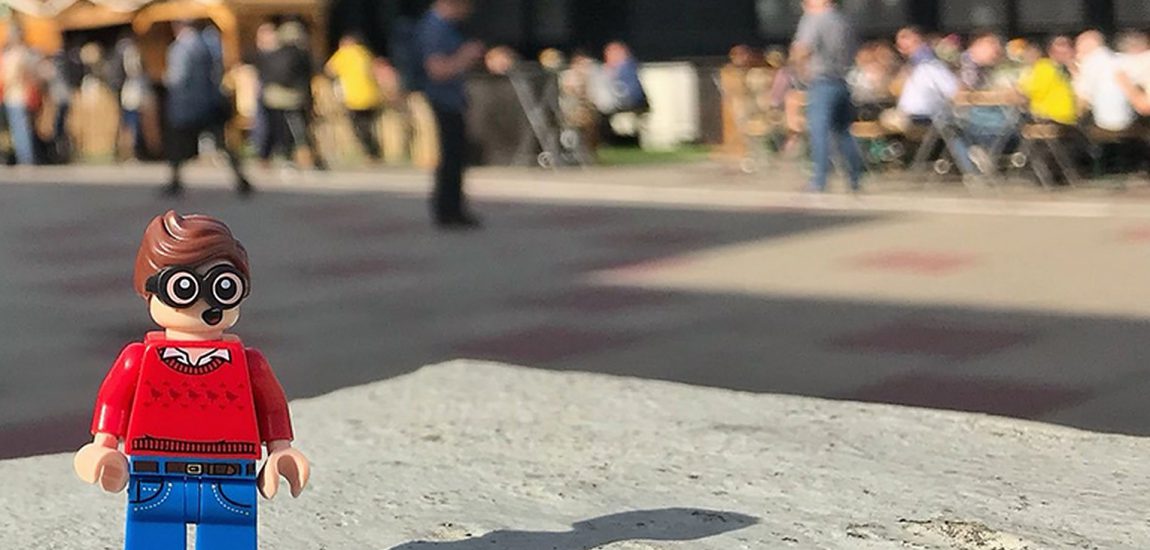
EGU2018: This is where all the science happens!
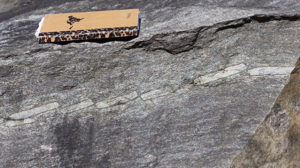
The prospect of attending a large international conference during your PhD can be really daunting, especially if you’re only in your second year and in the early stages of data collection. That’s why I hadn’t planned on going to one until my 3rd year. But thanks to EAG Student Sponsorship I was able to attend the EGU General Assembly 2018 in Vienna. A scary but exciting opportunity that I am so glad I took.
I was nervous when I arrived in Vienna, but a great way to get into the swing of things and meet lots of new people is to attend field trips. The GMPV division of EGU had organised a pre-conference fieldtrip to the Bohemian Massif, specifically targeted at early career researchers. I knew two people who were going as well, which definitely helps the nerves as you turn up and get bundled into a minibus and driven into the Austrian countryside. Soon enough though the minibuses were buzzing with conversation about what everyone was researching and what far flung places in the world people were from. Making friends before the conference means that you have a big group of friendly faces that you know when you’re at the conference, a vital crutch when giving presentations!
I was presenting my poster on “Kyanite leucogranites in E Bhutan” in the Friday evening session, meaning I was worried slightly worried that everyone would have gone home already. Thankfully though there were plenty of people still around and loads of science to be discussed. I was able to meet up with a number of people during the day because I had tweeted about my poster, so by the time the poster session came around I had practiced my spiel pretty thoroughly and I wasn’t as nervous talking to other researchers (the free-flowing beer may have also helped this…).
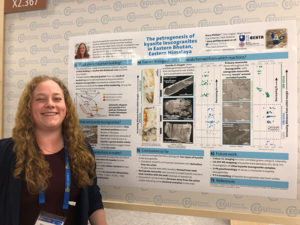
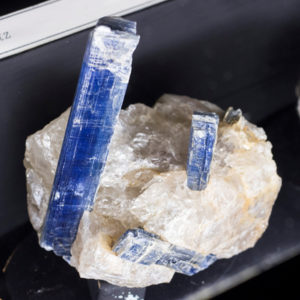
The variety of sessions on offer at EGU was incredible. You could wander from a talk on metamorphic petrology, to a poster on the strength of oil-bearing reservoir rocks, to a geoscience-themed games night! This variety also meant that it wasn’t necessary to attend the conference every single day. This allowed me some time to explore the wonderful city of Vienna. I spent one morning on a self-guided walking tour of the Old Town, culminating in a trip to the wonderful little Watch and Clock Museum. And there was plenty of time throughout the week to indulge in a Wiener Schnitzel or two!
I had a brilliant time in Vienna and I would like to thank EAG for their student sponsorship that allowed me to attend EGU 2018. The networking skills I learnt, the connections that I have made, and the scientific discussions I had will be invaluable for my PhD project and future research. Hopefully I’ll be able to go again next year to present some more final results!
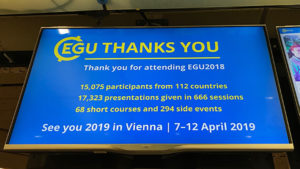
About the author
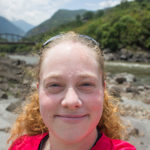
Stacy Phillips is a 2nd year PhD student at the Open University. She is investigating the role of crustal melting in the Himalaya by looking at kyanite leucogranites from Bhutan, Eastern Himalaya. This involves a combination of petrology, geochemistry, geochronology and P-T modelling to understand how these melts formed. Her interests in science communication have led to the creation of the Fieldwork Diaries podcast and she is an avid user of Twitter (@Shtacy_Phillips) for science communication (and the odd rant about sports). When not busy doing or communicating science you can find her taking photos of Lego minifigures (on Instagram @ShtacyP).
